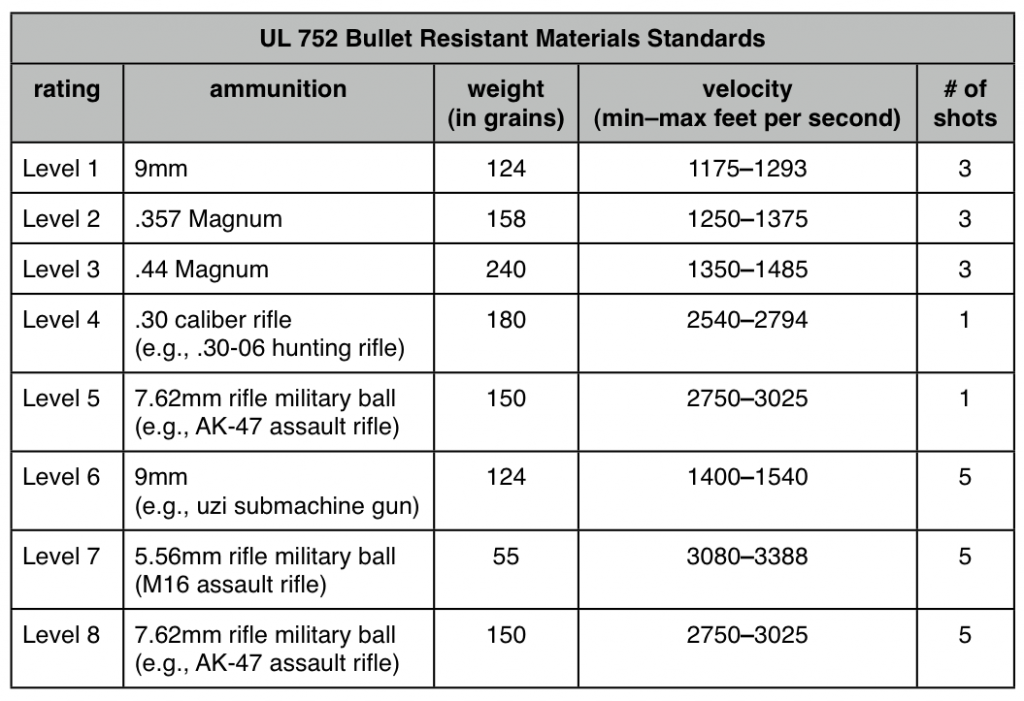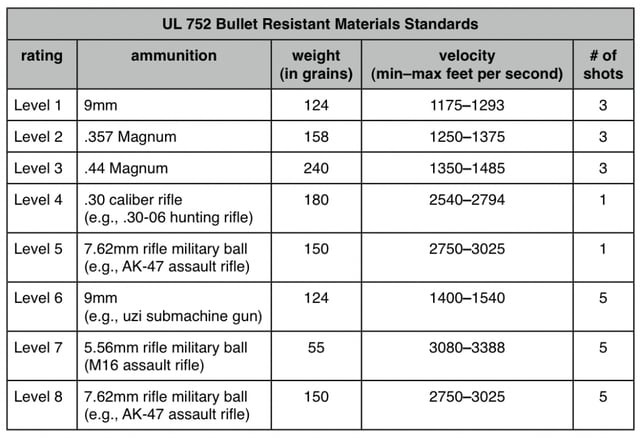In a $3 million building project it’s easy to let a $30,000 detail slip into the background, especially when you won’t be the one standing behind that ballistic glass every day. But if your client needs a bullet resistant barrier, then the functionality of that system–no matter how small it seems in the scope of the project–is going to define how they feel about your design.
The Three Facets of Bullet Resistant Barrier Design
Implementing a functional bullet resistant barrier means asking yourself three questions before you even fire up AutoCAD.
- What is the threat level?
- What is the business workflow?
- What are the structural realities?
Threat Level
Make sure the client has a clear idea of what threats to expect: Opportunistic criminals armed with pistols? Homegrown or internationally trained terrorists? Violent protests? Explosive blasts or forced-entry?
This chart and our past blog post on the matter will give you a good footing with UL bullet resistance ratings. This rating system is used for all the components in a bullet resistant barrier system, from the acrylic or polycarbonate in a transaction window to the bullet proof fiberglass lining the walls.
Business Workflow
How often will workers need to enter or exit the protect area within the bullet resistant barrier? Frequently entering and exiting the protected area poses significant security risks; if workers are constantly popping through the barrier in order to fetch papers or packages, plan on including a bullet resistant package passer in your design.
How much square footage has been set aside for the protected area, and how many workers will be in there at once? A four-by-ten customer service area might seem roomy, but standing a foot away from a wall of glass for eight hours with several coworkers quickly becomes unnerving. Encourage your client to allocate enough space so that workers are comfortable, and thus aren’t tempted to frequently “get some fresh air.”
Also make a point of talking through common daily business practices with the client, especially when it comes to counter space. Divide a standard retail counter in half with a wall of acrylic, and you’ll discover that there isn’t enough room for a computer and keyboard behind the bullet resistant barrier. Pushing that ballistic glass right out to the edge of the counter gives employees maximum workspace, but leaves nowhere for customers to set down a purse, sign a check, or sort through paperwork.
Structural Realities
A bullet resistant barrier essentially divides a room into two separate chambers, one on each side of the barrier. HVAC systems need to be routed so that the climate on each side of the barrier can be properly regulated. Lighting, power, and data supply likewise need to be arranged so that they can be accessed and controlled from either side of the barrier without compromising security. Nothing is worse than a beautiful bullet resistant system that requires running an orange extension cord under a ballistic door so that a fan can circulate the stale air inside the protected area.
Also bear in mind that ballistically rated components are significantly heavier than their conventional counterparts. Any system rated higher than UL Level 2 is going to necessitate some extra structural members in walls (which are reinforced with several layers of bullet resistant opaque armor), supporting large ballistic windows, and framing bullet resistant doors and package passers.
Partner With A Ballistic Subcontractor
Implementing a bullet resistant barrier in your project obviously introduces many issues, both in terms of design and in properly handling exotic materials (like glass-clad polycarbonate-based ballistic glass and UL-rated bullet resistant fiberglass). While it is possible to individually source all of the components you’ll need for a UL-quality bullet resistant barrier system, it’s best to partner with a subcontractor who specializes in bullet proof design and fabrication–and to do so early in the planning stages, so as to alleviate late (and often costly) changes in order to ensure functionality.
With more than three decades of experience designing, fabricating, and installing bullet resistant barrier systems, Total Security Solutions can furnish completely pre-fabricated bullet proof systems, shipped ready to install without any additional modification. Their expert staff can guide your team through the bidding, measurement, and installation process. Contact Total Security Solutions to learn more.

